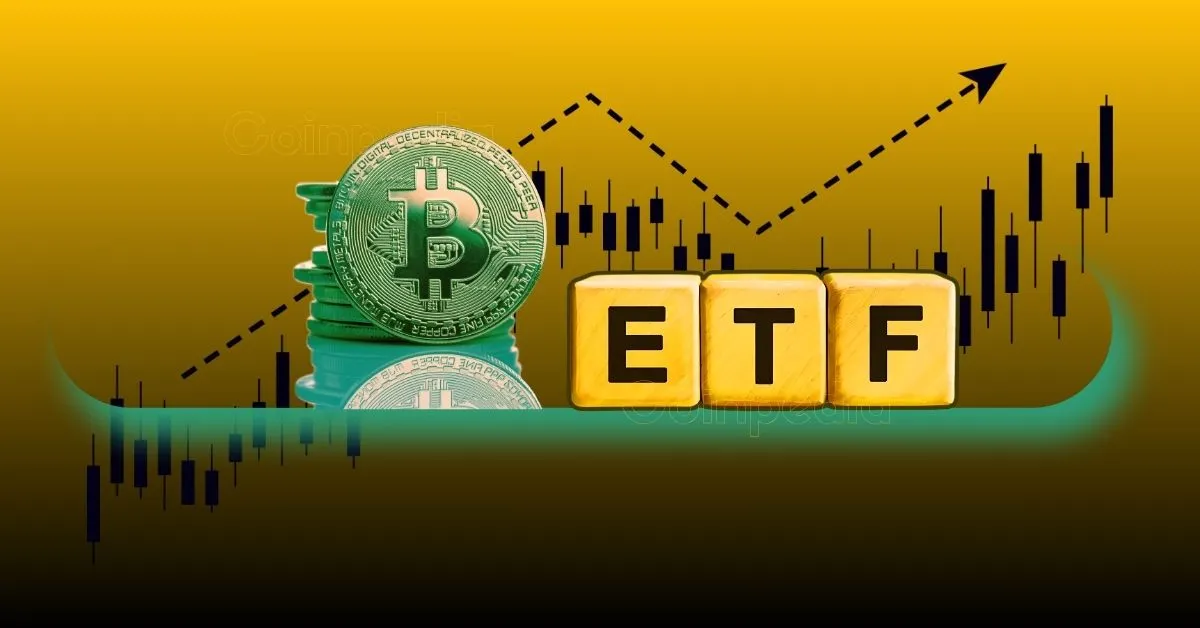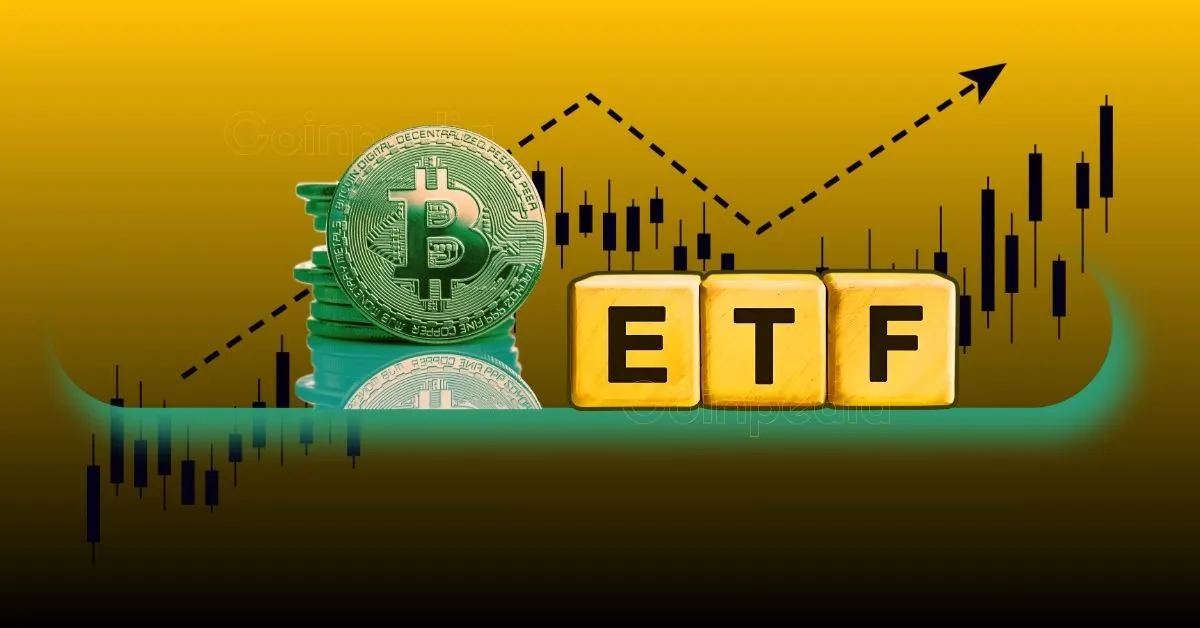The year 2025 has witnessed a financial phenomenon that many predicted but few fully grasped the scale of: the explosive growth of Bitcoin ETFs. In a mere 18 months since their launch in January 2024, U.S. spot Bitcoin ETFs have crossed the monumental $50 billion mark in cumulative net inflows. This isn’t just about numbers; it’s a seismic shift in how institutional and retail investors alike perceive and access the world’s leading cryptocurrency.
The Rise of the Titans: ETF Dominance
Leading this charge is BlackRock’s iShares Bitcoin Trust (IBIT), a fund that has not only set records but also redefined expectations. With over 700,000 BTC held and a staggering $53 billion in assets, IBIT stands as a testament to the power of institutional backing and the pent-up demand for regulated Bitcoin exposure. Fidelity’s FBTC closely follows, contributing significantly to the overall surge.
These ETFs have become a primary channel for institutional capital, streamlining the process for large investors to allocate funds to Bitcoin without the complexities of direct ownership, such as managing private keys and navigating cryptocurrency exchanges. BlackRock’s IBIT has even reached a point where it generates more revenue than its S&P 500 ETF, underscoring the magnitude of this shift.
The success of these ETFs can be attributed to several factors. Firstly, the regulatory approval by the U.S. Securities and Exchange Commission (SEC) has provided a layer of legitimacy and security that was previously lacking. This approval has reassured institutional investors, who are now more comfortable allocating significant capital to Bitcoin through these regulated vehicles.
Moreover, the infrastructure supporting Bitcoin ETFs has matured significantly. Custodial services, market makers, and trading platforms have all evolved to accommodate the influx of institutional capital. This ecosystem ensures that ETFs can handle large inflows without disrupting the underlying Bitcoin market.
Who’s Buying? Unveiling the Driving Forces
The demand fueling this $50 billion milestone comes from a diverse array of sources. Institutions, corporations, and asset managers are all jumping on board, driven by a mix of factors:
- Institutional Validation: The approval and launch of spot Bitcoin ETFs by the SEC have legitimized Bitcoin as an asset class in the eyes of traditional financial institutions. This stamp of approval has lowered the barrier to entry for risk-averse investors.
- Inflation Hedge: With ongoing economic uncertainty and concerns about inflation, Bitcoin is increasingly seen as a store of value, akin to gold. ETFs provide a convenient way to hedge against these risks.
- Diversification: Institutional investors are constantly seeking new avenues for diversification. Bitcoin’s unique properties and low correlation with traditional assets make it an attractive addition to portfolios.
- FOMO (Fear of Missing Out): As Bitcoin’s price continues to rise, fueled by ETF inflows, a sense of urgency is gripping the market. Investors who were previously on the sidelines are now rushing to get in on the action.
Beyond these primary drivers, there are secondary factors at play. The global macroeconomic environment, characterized by low-interest rates and quantitative easing, has made investors more open to alternative assets like Bitcoin. Additionally, the growing acceptance of Bitcoin by corporate treasuries and the increasing number of Bitcoin-related financial products have further fueled demand.
The Numbers Don’t Lie: Key Metrics and Milestones
Beyond the headline $50 billion figure, several other metrics highlight the significance of this trend:
- Bitcoin Dominance: Bitcoin accounts for nearly 83% of all inflows into digital asset investment products this year, solidifying its position as the leading cryptocurrency.
- Market Share: BlackRock’s IBIT has captured a significant market share, sometimes exceeding 50%, showcasing its popularity among institutional investors.
- Trading Volumes: US spot Bitcoin ETFs have surpassed $50 billion in cumulative trading volume, indicating high liquidity and investor interest.
- Daily Inflows: On several occasions, these ETFs have seen daily net inflows exceeding $600 million, demonstrating the strength of demand.
These metrics underscore the rapid adoption and integration of Bitcoin ETFs into the mainstream financial system. The high trading volumes and daily inflows indicate a robust and active market, while the dominance of Bitcoin in digital asset inflows highlights its unparalleled position in the cryptocurrency space.
The market share data is particularly telling. BlackRock’s IBIT, with its significant market share, has become a bellwether for the broader Bitcoin ETF market. Its performance and popularity reflect the trust and confidence that institutional investors have in the product and the underlying asset.
Beyond Bitcoin: The Altcoin ETF Horizon
While Bitcoin ETFs are currently dominating the market, the success of these products has paved the way for potential altcoin ETFs. There is growing anticipation that ETFs for Solana, XRP, and Litecoin could be on the horizon, pending SEC approval. This expansion could further broaden the appeal of cryptocurrency investments and attract even more capital into the space.
The potential for altcoin ETFs is significant. These ETFs could provide investors with exposure to a broader range of digital assets, each with its unique use cases and growth potential. For example, Solana’s high-speed transactions and low fees make it an attractive platform for decentralized applications, while XRP’s focus on cross-border payments could appeal to institutional investors looking to diversify their portfolios.
However, the path to altcoin ETFs is not without challenges. The regulatory landscape for altcoins is more complex and uncertain compared to Bitcoin. The SEC’s approach to altcoin ETFs will be crucial in determining their viability and success. Additionally, the liquidity and market depth of altcoins are generally lower than Bitcoin, which could pose challenges for ETF providers in terms of pricing and trading.
Impact on Bitcoin’s Price and Market Dynamics
The massive inflows into Bitcoin ETFs have had a direct and significant impact on Bitcoin’s price. As ETFs accumulate Bitcoin to meet investor demand, the available supply on exchanges decreases, creating upward pressure on the price.
- Price Targets: Some analysts predict that Bitcoin could reach $117,000 or even $200,000 in 2025, driven by continued ETF inflows.
- Reduced Volatility: While Bitcoin is known for its volatility, the presence of large institutional investors through ETFs may help to stabilize the price and reduce sharp swings.
- Market Maturity: The growth of Bitcoin ETFs signals a maturing market, attracting more sophisticated investors and reducing the influence of retail speculation.
The impact on Bitcoin’s price is a direct result of the supply-demand dynamics created by ETF inflows. As ETFs purchase Bitcoin to meet investor demand, the available supply on exchanges decreases, leading to upward pressure on the price. This phenomenon has been observed in the past, where significant inflows into Bitcoin investment products have coincided with price rallies.
The potential for reduced volatility is another significant development. Institutional investors, with their long-term investment horizons and risk management strategies, can help stabilize the Bitcoin market. Their presence can reduce the influence of retail speculation and short-term trading, leading to a more stable and predictable price environment.
A Word of Caution: Potential Risks and Challenges
Despite the overwhelmingly positive narrative, it’s essential to acknowledge the potential risks and challenges associated with Bitcoin ETFs:
- Regulatory Uncertainty: The regulatory landscape for cryptocurrencies is still evolving, and changes in regulations could impact the operations and appeal of Bitcoin ETFs.
- Market Corrections: Bitcoin is still a volatile asset, and a significant market correction could lead to outflows from ETFs, exacerbating the price decline.
- Concentration Risk: The dominance of a few key players, such as BlackRock and Fidelity, could create concentration risk in the ETF market.
- Custody Concerns: While ETFs alleviate the need for individual investors to manage their own private keys, they still rely on custodians to securely store the underlying Bitcoin.
Regulatory uncertainty remains a significant risk. The SEC and other regulatory bodies continue to evolve their approach to cryptocurrencies, and changes in regulations could impact the operations and appeal of Bitcoin ETFs. For example, stricter regulations could increase the cost and complexity of operating these ETFs, potentially reducing their attractiveness to investors.
Market corrections are another risk to consider. Bitcoin’s price has historically been volatile, and significant corrections are not uncommon. In the event of a market downturn, ETF investors may choose to sell their holdings, leading to outflows and further exacerbating the price decline. This dynamic can create a feedback loop, where falling prices lead to more selling, and vice versa.
Concentration risk is also a concern. The dominance of a few key players in the Bitcoin ETF market could create systemic risks. If one of these players were to face operational or financial difficulties, it could have a ripple effect on the broader market. Additionally, the concentration of Bitcoin holdings in a few ETFs could lead to liquidity issues, particularly during periods of high market stress.
A New Era for Digital Assets
The $50 billion milestone achieved by Bitcoin ETFs is more than just a financial data point; it represents a fundamental shift in the perception and accessibility of digital assets. These ETFs have bridged the gap between traditional finance and the world of cryptocurrency, opening the door to a new era of institutional adoption and mainstream acceptance. While challenges remain, the trajectory is clear: Bitcoin and other digital assets are here to stay, and ETFs are playing a crucial role in their evolution.
The Unfolding Legacy
The Bitcoin ETF surge to $50 billion marks not just a milestone, but the beginning of a transformative chapter in finance, where digital assets increasingly integrate with and influence traditional investment strategies, reshaping the financial landscape for years to come. This integration is evident in the growing acceptance of Bitcoin by traditional financial institutions, the increasing number of Bitcoin-related financial products, and the evolving regulatory framework.
The legacy of Bitcoin ETFs will be measured not just by the capital they have attracted but by the lasting impact they have on the financial system. These ETFs have demonstrated that digital assets can coexist with and complement traditional assets, offering investors new opportunities for diversification, hedging, and growth.
As the market continues to evolve, the role of Bitcoin ETFs will likely expand. They could become a standard offering in investment portfolios, alongside traditional assets like stocks and bonds. Additionally, the success of Bitcoin ETFs could pave the way for other innovative financial products, such as derivatives and structured products, further broadening the appeal of digital assets.
In conclusion, the $50 billion milestone achieved by Bitcoin ETFs is a testament to the growing acceptance and integration of digital assets into the mainstream financial system. While challenges and risks remain, the trajectory is clear: Bitcoin and other digital assets are here to stay, and ETFs are playing a crucial role in their evolution. The unfolding legacy of Bitcoin ETFs will be measured by their lasting impact on the financial landscape, reshaping investment strategies and opening new opportunities for investors worldwide.












